23 Jan School Design: 10 Steps For A Children-Centric Design
School design in Architecture is a complex structure to maintain. It demands that we look at the infrastructure that becomes part of everyday life for children. School design has to take place at many levels that start with an efficient layout. Along with every layer of design, the sensitivity of school design increases. Designing formal and informal spaces in such a manner that it makes the school design fluid affects how a child responds to it. School designs are effective only if the child has fun learning within their spaces. Hence, the use of materials, furniture designs, and colours that one uses all become the elements that define children’s learning environment. Thus, here are the 10 steps that would help in making a school design that is a culmination of pedagogical spaces turned into fun learning experiences for children.
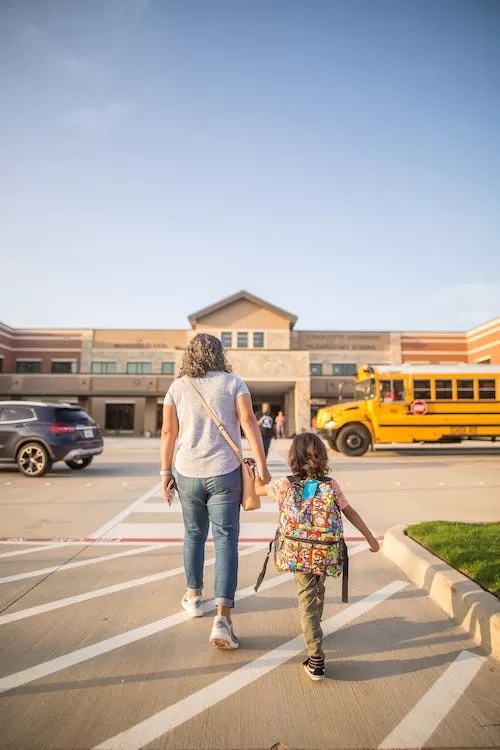
1. Fluidity of the Layouts
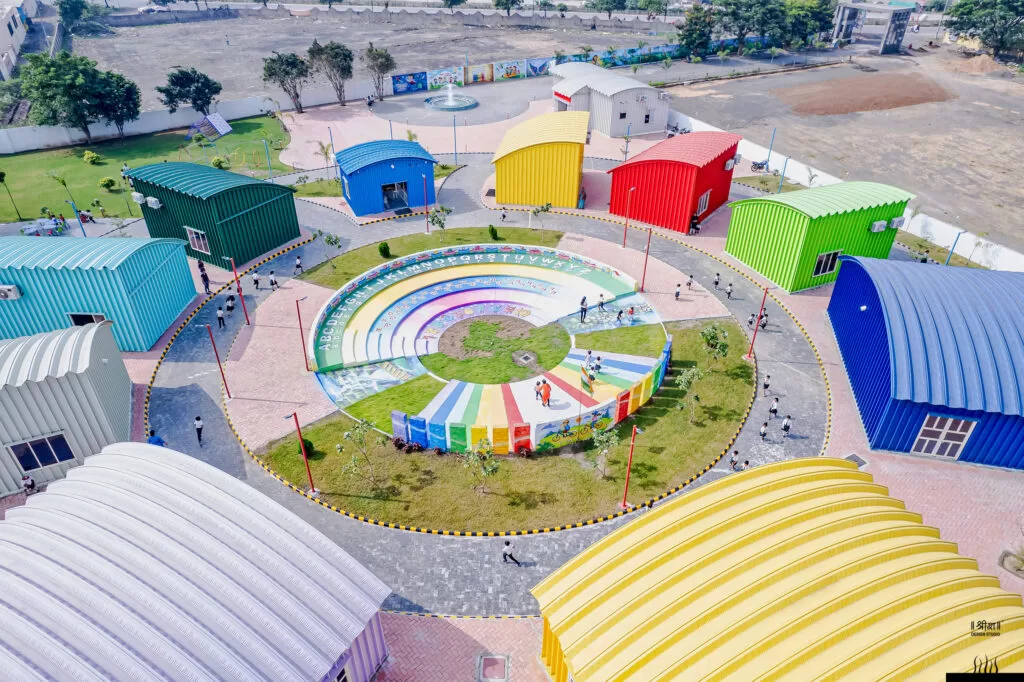
When designing a school, the first step is the arrangement of spaces. School design is the greater culmination of formal spaces such as classrooms, informal spaces such as corridors and pathways, and recreational spaces. A school design must have these spaces in coordination to develop fluid movement inside the building. A school design layout also depends on the distances and measures of the in-between spaces that define the environment of the building.
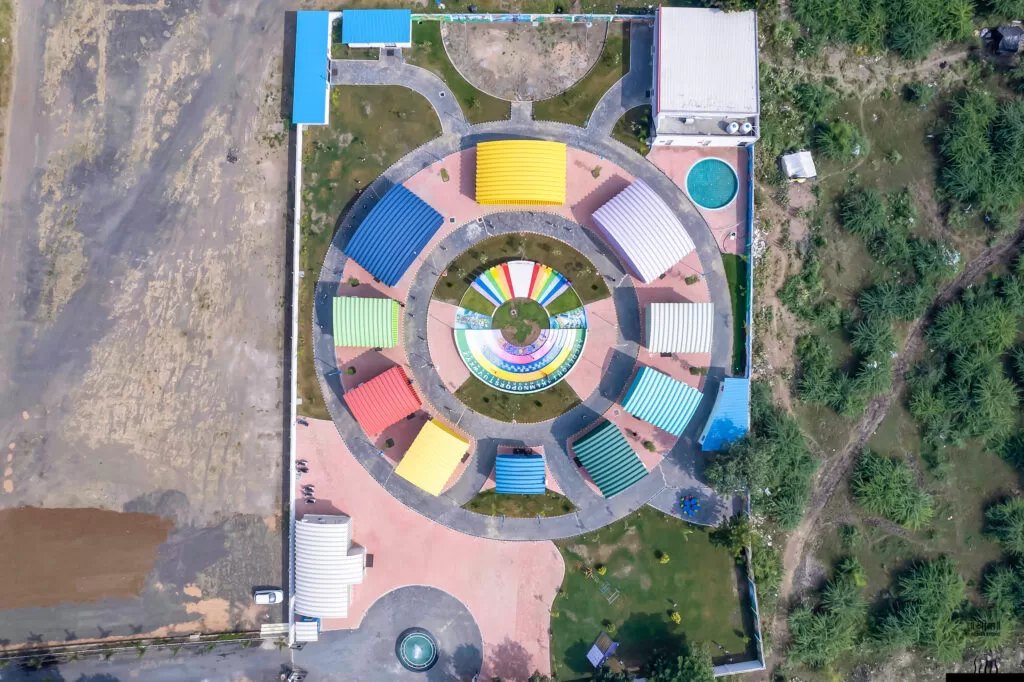
2. The engagement of natural light and ventilation
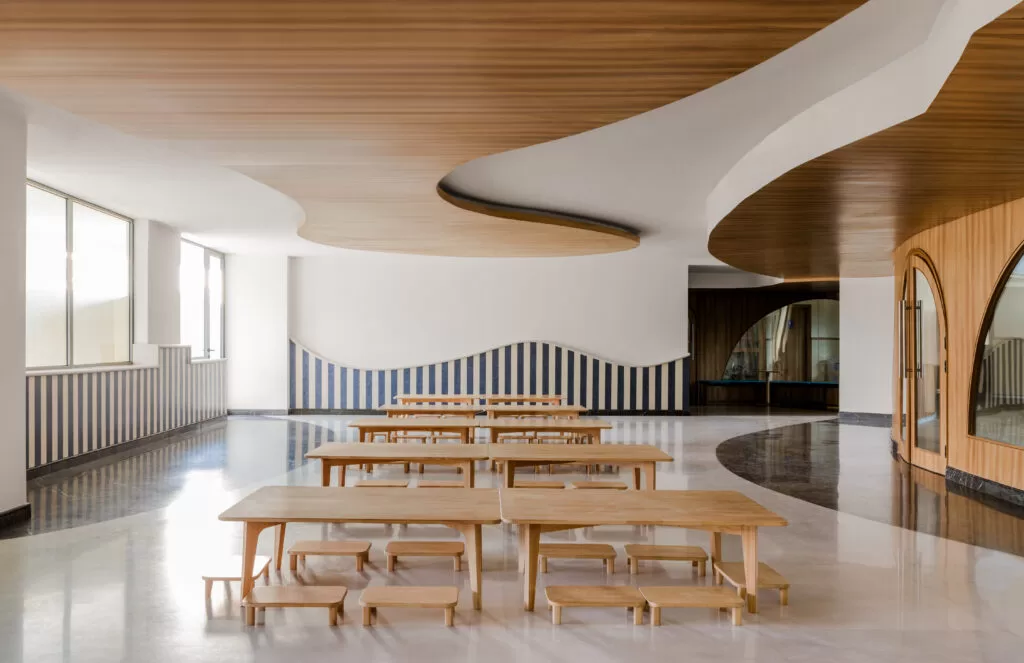
When any learning is associated with a space, nature has a very important role to play. Nature and its elements can enhance the environments that are built with man-made materials. As said and experienced, the relationship between the outside and inside matters for the functionality of the building. Hence, when school design takes place, one has to make sure that it has enough natural light and ventilation. Every classroom must have a proper amount of openings that flush the natural light during the day. There must be spaces, such as common grounds, that can provide open, lighted spaces to play and gather.
3. Balance the green and open spaces
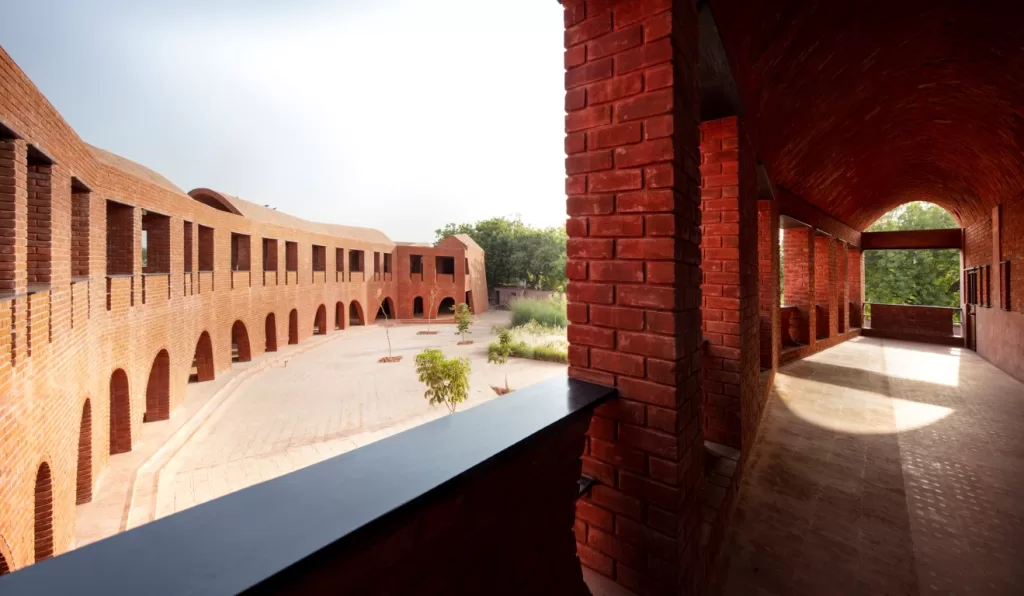
A good school design is when there is a good balance between the open and closed spaces in order to create a good environment. A child fostering in the school depends on the kind of activities he does during school time in the school building. As a result, when one combines open spaces such as grounds, parks, corridors, and passages with some green aspects such as lawns, trees, and different flowery plants, the spaces make exceptions in their own. These spatial exceptions have a positive impact on the school’s design.
4. Furniture Designs
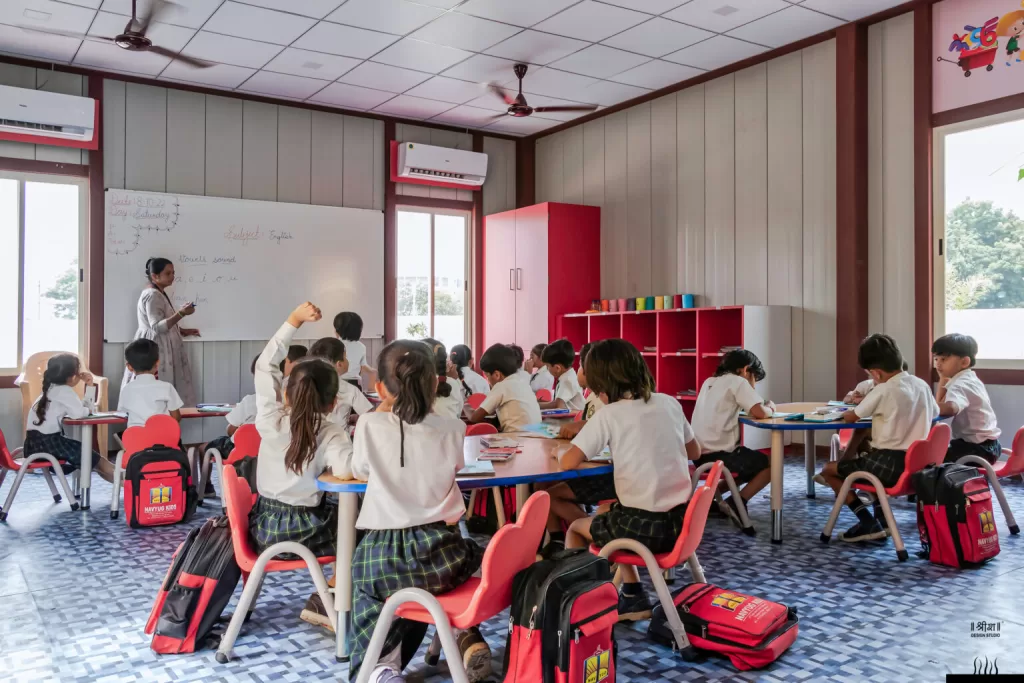
After the spaces are designed with the correct sizes and natural lighting, the elements that are the most important part of the school design are the furniture inside. A cupboard in a school works as a partition in an open space, where a small storage unit can sometimes work as a seat. There are numerous creative ways in which a school design can have furniture. Things to consider during a furniture design in a school must be the material and safety, according to the children.
5. Color Combinations
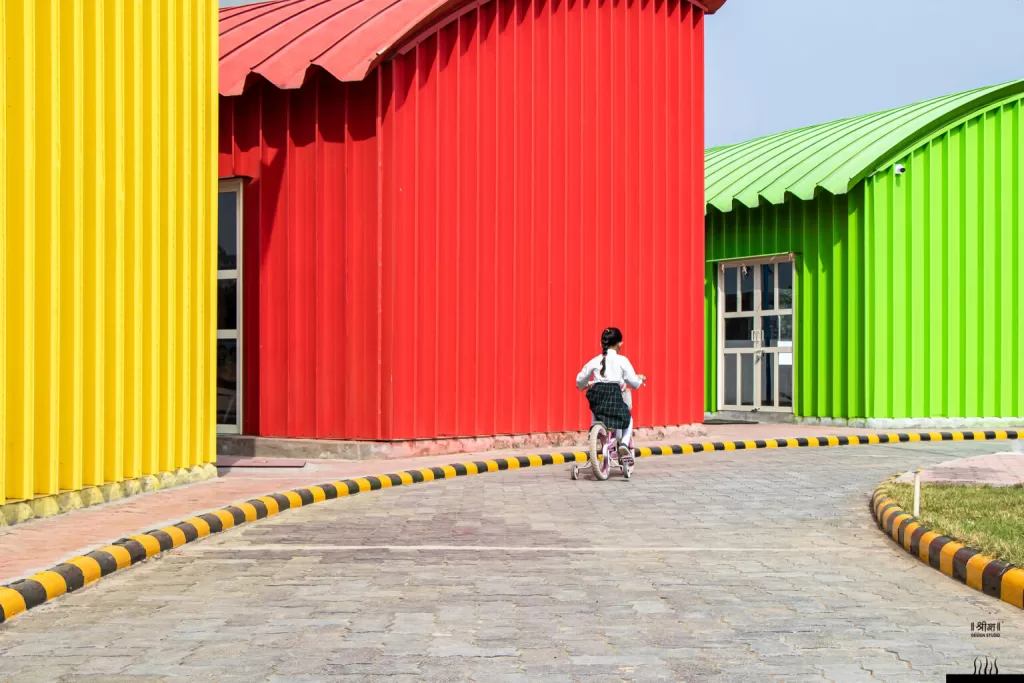
The use of appropriate colours in the classroom or in the furniture is very essential for school design. The colours help one perceive the spaces in their minds that will affect their overall behaviours within them. Using colours for the walls or the materials chosen can affect the environment for the children. Different colours can be used for different functions in the rooms. The floor can have different colour patches and designs that would be visually appealing. Colours often give recognition to the elements and spaces, which would be beneficial for the learning and growth of the kids.
6. Use of proper construction materials
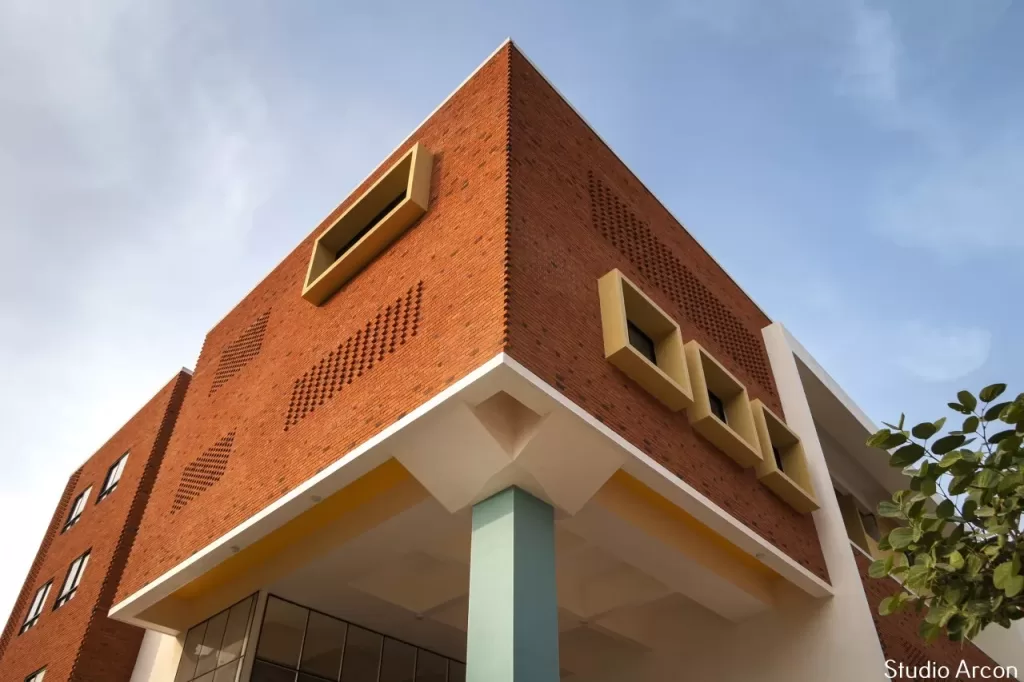
Often, a good school design or any space design, along with the layout, depends upon the kind of material it is built with. Thus, while making or planning a school, one must see what materials are used for building it. The use of materials that are insulating would reduce the energy consumption of the building, hence making the school building more efficient. Including materials that are harmful to the children while being around them would be necessary. Making furniture with materials that are light-weight, not very sharp or edgy, and smooth enough to ensure their routine activities is a must.
7. Proper Services
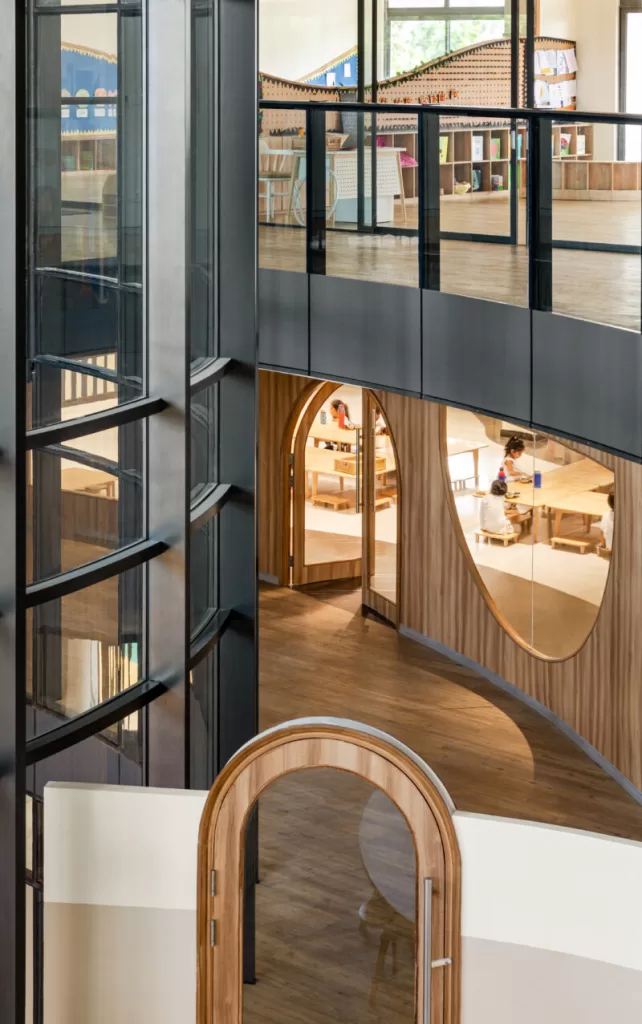
Apart from the main building areas, the most important part of the school design is the services. The staircase, toilets, corridors, etc. The toilets should be properly designed for all age groups, and they must also have all the facilities for disabled kids. It must provide all the amenities, such as drinking water and first aid, if needed. The staircases must be designed according to the norms of the planning regulations; they must not be made with any slippery materials, and they must have proper railings.
8. Inclusion of Technology
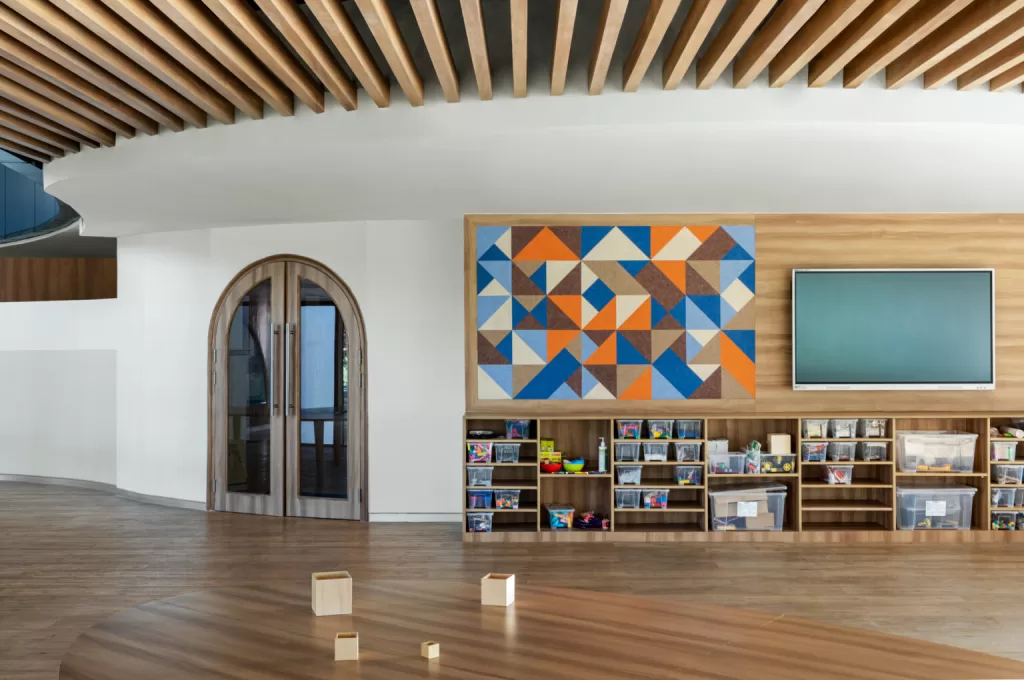
When it comes to modern school design, it demands incorporating the use of technology within the building. Technologies can include the security system and the smart class systems, which would be a part of their education. Also, technology can be used in maintaining the school’s greens, which will help understand the reuse of water and irrigation. There can be an inclusion of technology in the drainage systems of the school. To incorporate all these technologies, there must be proper infrastructure in the school design that will support these aspects.
9. Safety must be ensured
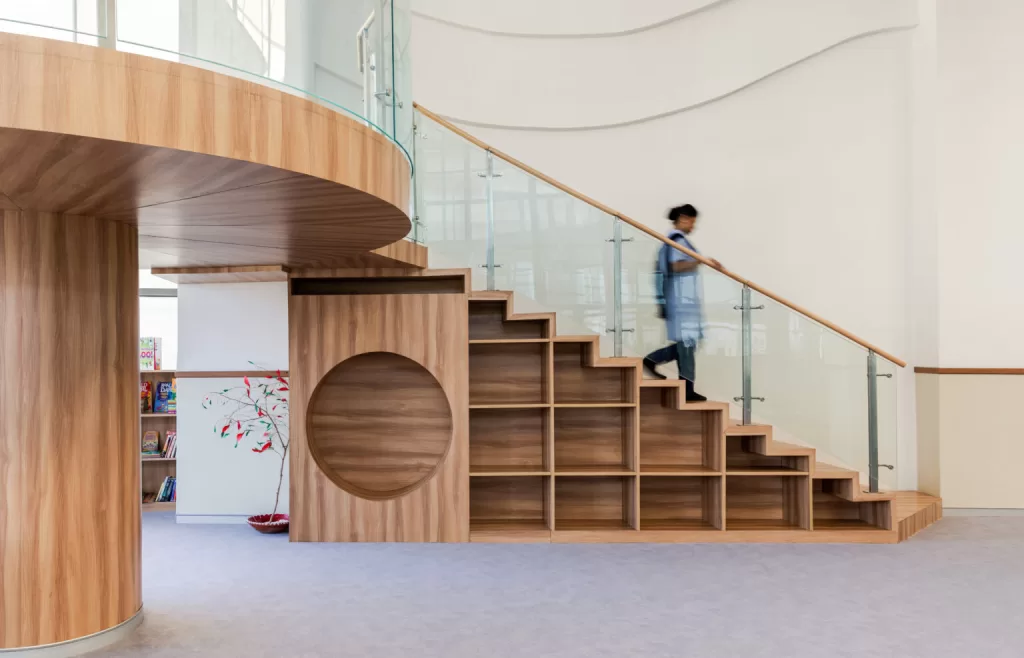
While designing the school, at every point, there is an issue of safety that has to be addressed. The staircase must have no slippery materials used, and the trade and riser must be of proper measure. There must be railings at each floor passageway, and the windows must have proper safety grills provided. The edges of the furniture must not be edgy, so it may hurt while moving. All the electrical boards must be safe and kept out of reach of children. The boundary walls must be high enough for no one to enter or jump off, and they also must have proper fencing.
10. Sustainability
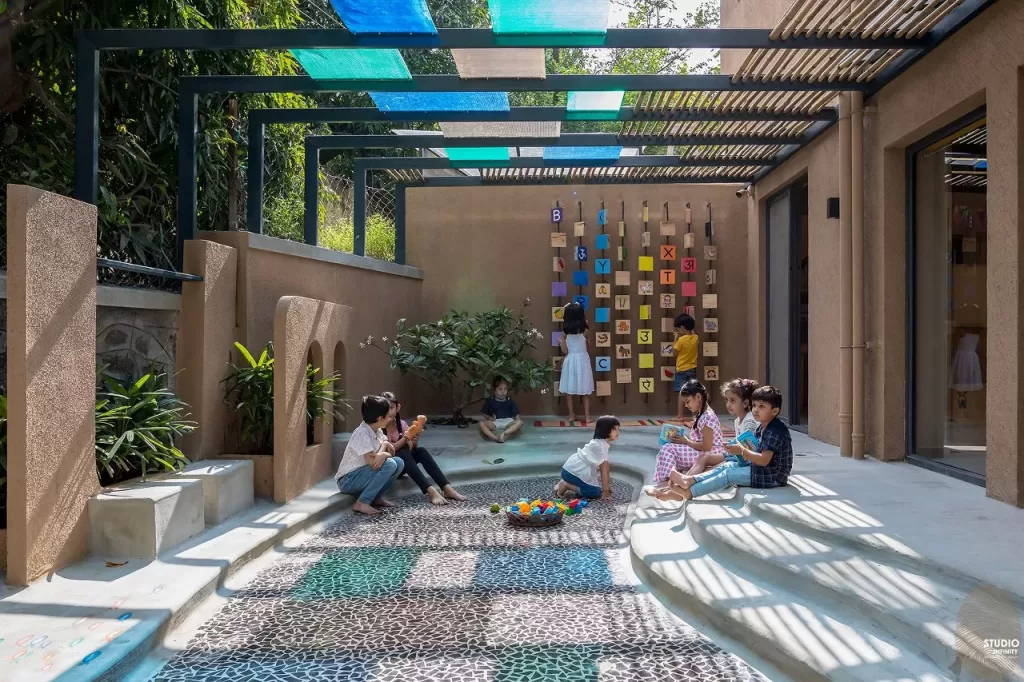
The school building is the first medium of learning for the children. They learn as they see and move; hence, including the factor of sustainability in a school design can lift up the whole atmosphere. Making a building with reusable materials can make the overall building more efficient and less energy-consuming. Various drainage systems can also be used as tools for the education of the children on campus. Including green spaces that would help nurture plants would be beneficial.
Looking at the above steps by which a school design can be efficient for creating beautiful atmospheres for the children, one must also consider certain rules and regulations given by the planning commission for building a school building in India. These considerations would further help make the designs appropriate.
1. Functional spaces required
Teaching spaces
- Classrooms
- Physics lab
- Chemistry lab
- Biology lab
- Domestic science lab
- Social science room
- Art room
- Crafts room
- Activity room
- Science theory room
- Library
Administrative spaces
- Principal’s office
- Staff area
- General office
Recreational spaces
- Canteen
- Multipurpose halls
- Common rooms
- Open grounds
- Garden areas
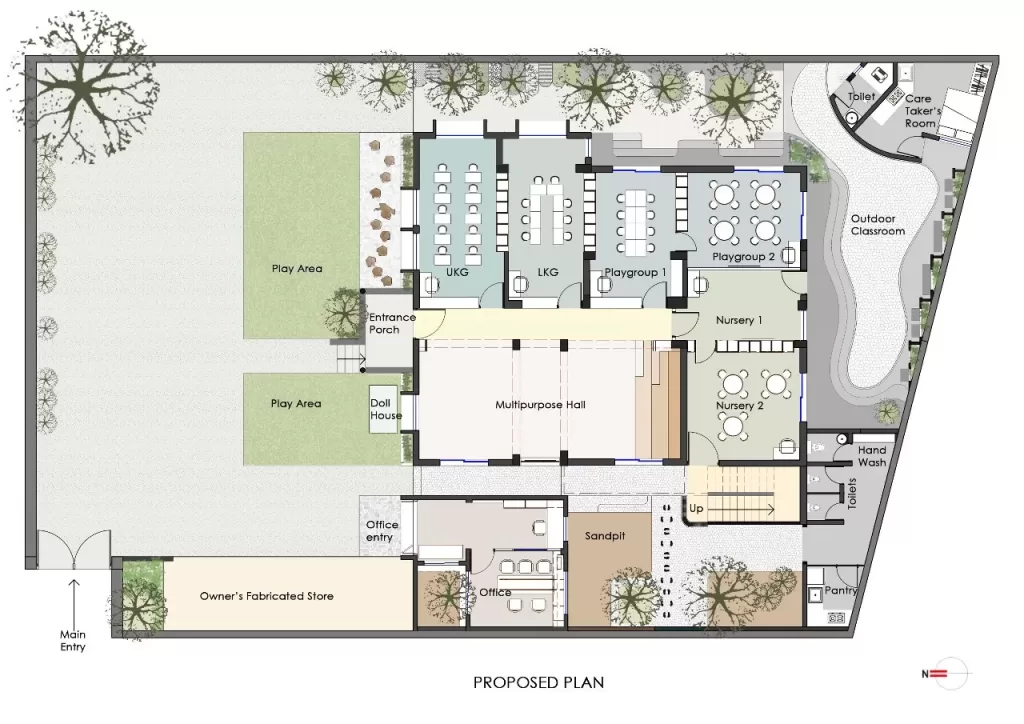
2. Dimension for the classrooms
Length to Breadth proportion must be 1:1.5
The height of the classrooms must be 3 meters
The sill heights must not be more than 0.8 meters
There must be proper light and ventilation in every classroom
The distance of the furniture from the chalkboard must be 2.2 meters.
3. Circulation areas
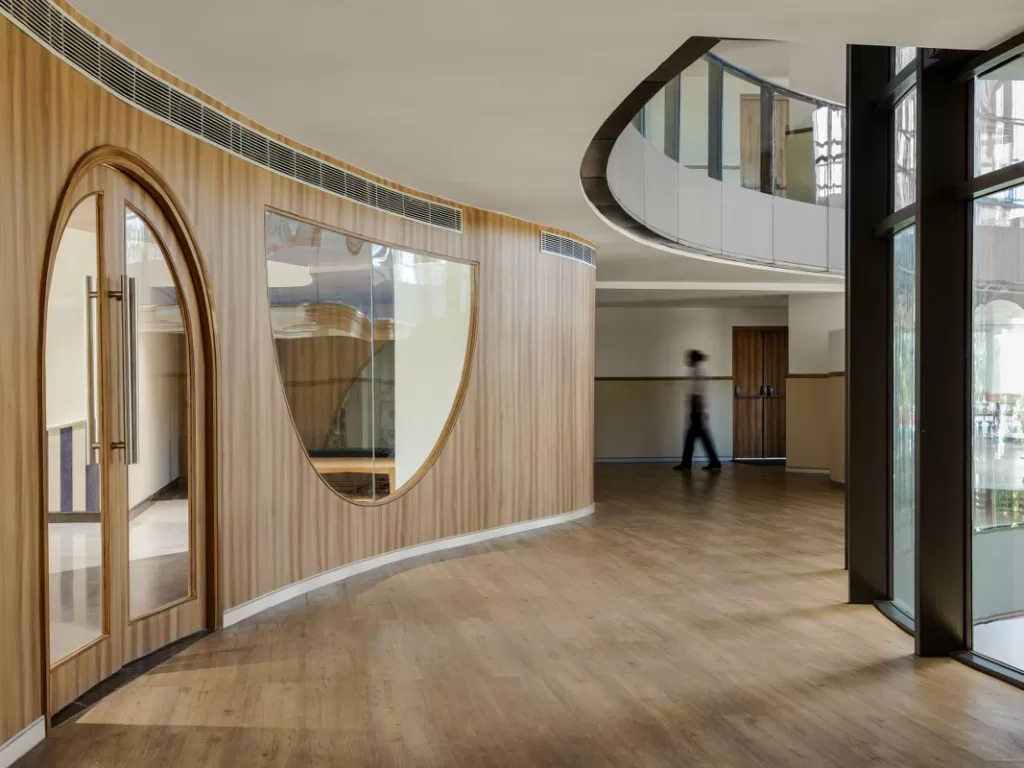
The areas such as corridors, entrance halls, staircases, etc. in the building, along with the passageways, shall not be more than 18 to 24 percent of the building.
4. Outdoor areas
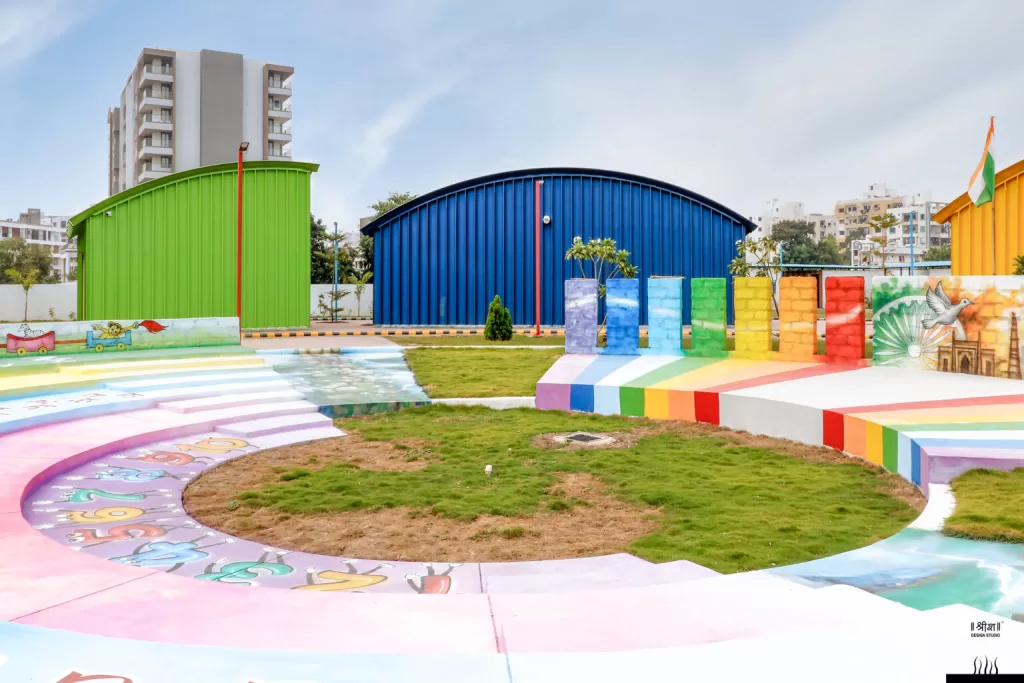
The outdoor areas of the schools, such as playgrounds, open-air assemblies, parking, etc., shall depend upon the size and location of the school. For outdoor spaces such as lawns, courtyards, etc., a 1 metre square area per student shall be calculated.
5. Building Boundaries
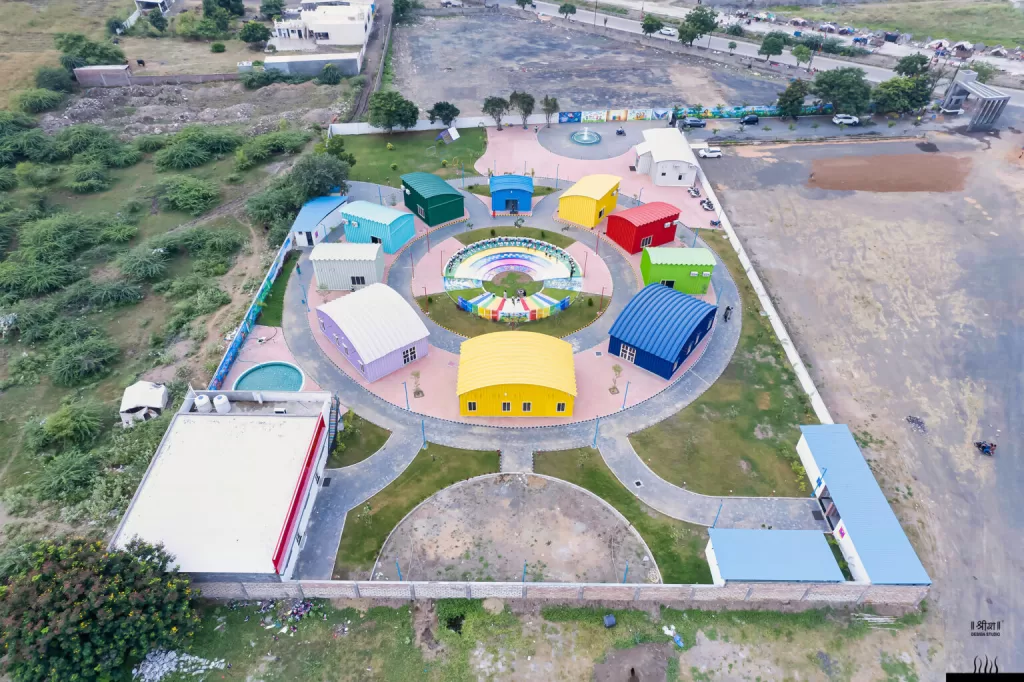
The front setback line for the building on the plot must be 15 metres, whereas the back setback line of the building must be 6 metres.
6. Site selection
The site must be away from the heavy-traffic roads and nearer to residential areas. It should ensure good natural drainage. It must be away from places that generate noise pollution.
7. Inclusion of landscape
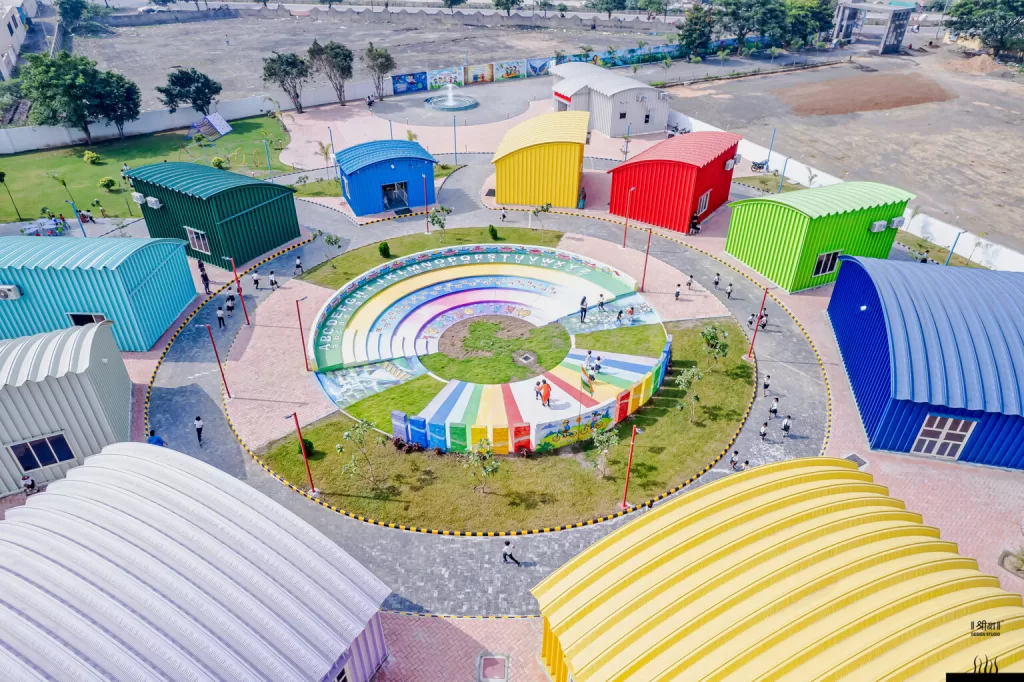
Plants, hedges, and shrubs must be planted immediately outside the classroom windows, where they are a source of natural light and ventilation. The rows of tall and shady trees should be at right angles to the source of light to avoid the glare in the building.
8. Exit ways
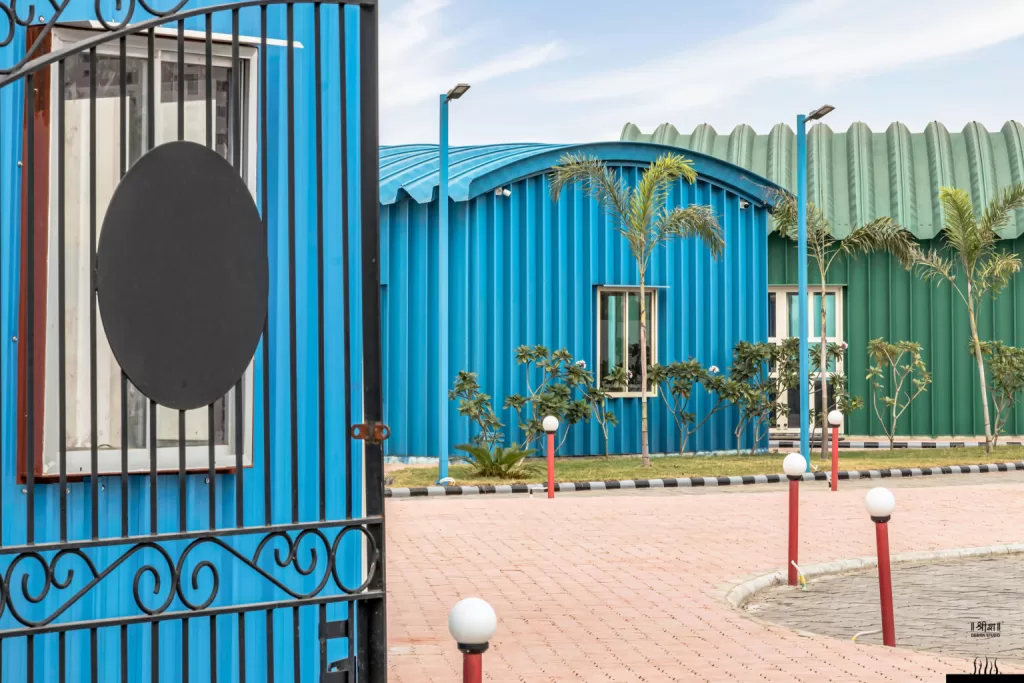
All exits must be free from any obstructions. All the exitways must be marked and signed to guide the students. They shall be arranged such that they do not come in the way of any constructed units.
By following the steps of school design and planning according to the rules and regulations for its space dimension and space provisions in India, one creates beautiful learning environments. School design has to be very essentially planned in terms of its functionality, as it serves a larger purpose than just being a building in the lives of children. When one comes up with a school design, it should have all the above points covered for creating a beautiful atmosphere for learning. Making a functionally appropriate sustainable school design that enhances the learning atmosphere for a child is the need of modern India.
Content Writing And Research By: Ar. Rajeshwari Pandya Modi
The post School Design: 10 Steps For A Children-Centric Design appeared first on The Architects Diary.




No Comments